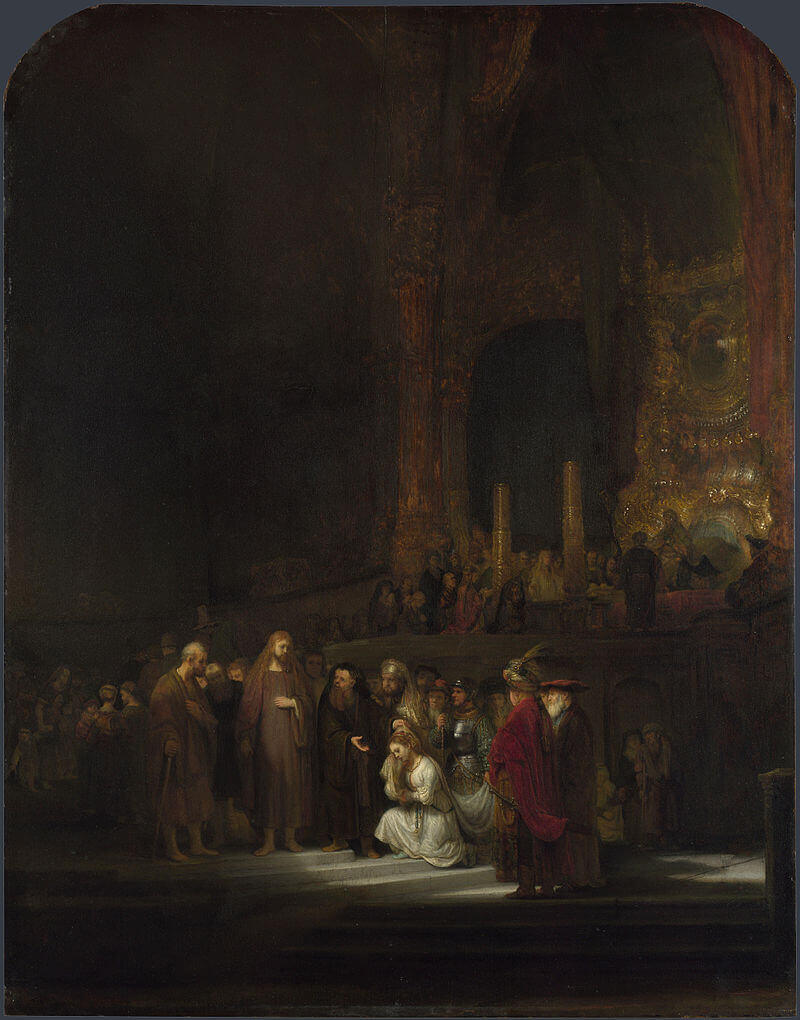The Woman Taken in Adultery, 1644 by Rembrandt

Rembrandt was not a churchgoer and adopted an open approach to religion, painting adherents to all the various religious groups in the Dutch society of the time, which was no doubt a useful approach that aided his business affairs. His father was a member of the Dutch Reformed (Protestant) Church and, although his mother was a Roman Catholic, she went along to her husband's church. This undoubtedly helped Rembrandt to understand both sets of teachings and led him to follow his mother in her devotion to the Bible.
The Woman Taken in Adultery shows the episode of Jesus and the woman taken in adultery from the Gospel of Saint John. In this scene, a few Jews, mainly Scribes and Pharisees, tried to catch Jesus condoning disobedience to the Jewish Law, knowing that Jesus pitied wrong-doers. To do this, they produced a woman who had been caught taking part in adultery.
The sinful woman, her white dress glowing with light, is placed in the center of the work. Jusus, his face full of compassion, uses the incident to teach that God forgives sinners. Rembrandt made Jesus appear taller than the other figures and more brightly lit. In contrast, the Jews are "in the dark" and appear lower. Symbolically, Jesus's height represents his moral superiority over those who attempted to trick him.




















